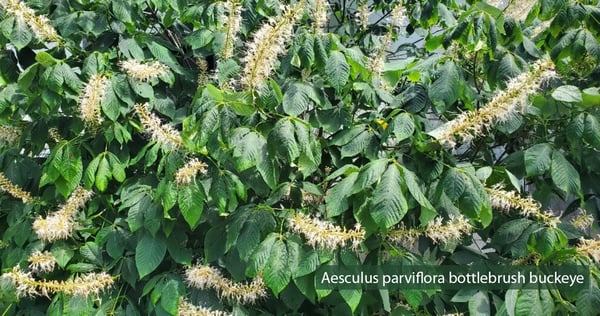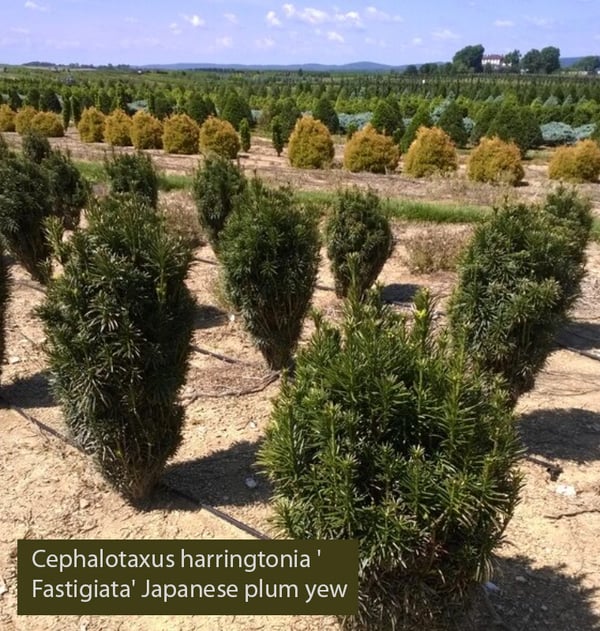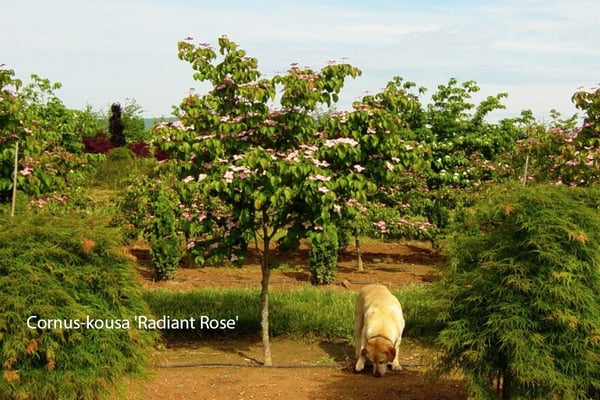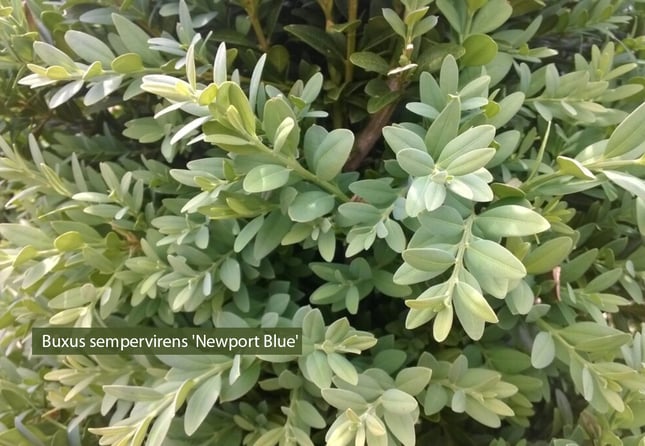Throw a few venison burgers on the grill, because this business has driven the thought of deer as anything but a nuisance out of my head long ago. Deer are a problem that keeps coming back for more and in greater numbers after each breeding season. Solutions are a challenge since “deer resistant plant” is a relative term--and the list is short to begin with.
But I’m certainly not one to look away and let the fauna run rampant. Solutions, imperfect as they may be, are out there. Deer resistant shrubs and trees are especially needed in the outer suburbs because, most of the time, the land taken over for development was/is habitat for deer. Their natural food source has been replaced with your garden.
What are the Deer Looking For?
 Before we get into some viable deer resistant options that are available, let’s discuss what it is a deer wandering through your yard is foraging for. Deer like to browse twigs, leaves, buds, flowers, and tender shoots. They tend to eat small tender stems of trees or shrubs.
Before we get into some viable deer resistant options that are available, let’s discuss what it is a deer wandering through your yard is foraging for. Deer like to browse twigs, leaves, buds, flowers, and tender shoots. They tend to eat small tender stems of trees or shrubs.
They love Eastern Arborvitae. With the exception of ‘Elegantissima’, they will eat Easterns from the ground up to four feet off the ground. However, they rarely feed on Western Arborvitae (Thuja plicata cultivars)
Deer have learned over time that certain plants are toxic. So they avoid those unless they are desperately hungry. Those plants don’t taste or smell appealing, or maybe the mouth feel is unappealing to them unless they are starving.
Which Shrubs and Trees are “Deer Resistant?”
 Again, “deer resistant” is a relative term, but certain trees and shrubs are toxic or just plain unappealing to deer. When customers request a deer resistant plant, our first recommendation is always Boxwood. It is highly resistant to deer. There are others such as river birch (if you are looking for a tree) Viburnum dentatum (Arrowood Viburnum), and cephalotaxus harringtonia (Japanese Plum yew) that are rarely eaten by deer. Some hollies such as John T Morris do pretty well, but others such as Blue Maid and Nellie Stevens will get decimated. The deer will just devour every leaf from the ground up as far as they can reach. If you want to dig deeper into this subject, the New Jersey Agricultural Experiment Station at Rutgers University has published an extensive list of landscape plants rated by deer resistance that includes trees, shrubs, groundcovers, annuals, and perennials.
Again, “deer resistant” is a relative term, but certain trees and shrubs are toxic or just plain unappealing to deer. When customers request a deer resistant plant, our first recommendation is always Boxwood. It is highly resistant to deer. There are others such as river birch (if you are looking for a tree) Viburnum dentatum (Arrowood Viburnum), and cephalotaxus harringtonia (Japanese Plum yew) that are rarely eaten by deer. Some hollies such as John T Morris do pretty well, but others such as Blue Maid and Nellie Stevens will get decimated. The deer will just devour every leaf from the ground up as far as they can reach. If you want to dig deeper into this subject, the New Jersey Agricultural Experiment Station at Rutgers University has published an extensive list of landscape plants rated by deer resistance that includes trees, shrubs, groundcovers, annuals, and perennials.
The good news is you don’t have to search the world over for plants you don’t really want that the deer also do not want. We don’t grow the plants listed above because they are deer resistant but because they are desirable, useful, and in-demand. Being deer resistant is just icing on the cake.
The Plants by Category index on our website lists deer resistant shrubs and trees that tend to get snubbed by uninvited garden guests--unless they are desperate. The list includes a variety of popular boxwood and dogwood cultivars.
Minimizing the Risk of Deer Damage on Your Landscape
 Some landscapers have experimented with putting in a few desirable plants at the perimeter of a large lot far from the landscaping you want to protect. Because it is the does that cause the most damage, the idea is to keep them busy at some distance from the plants you want to protect. Bucks are more averse to being close humans.
Some landscapers have experimented with putting in a few desirable plants at the perimeter of a large lot far from the landscaping you want to protect. Because it is the does that cause the most damage, the idea is to keep them busy at some distance from the plants you want to protect. Bucks are more averse to being close humans.
The fact is that “deer resistant” is not a failsafe designation. Deer resistance really refers to shrubs and trees that we’ve observed to be “least preferred” by deer. But in a pinch, when there’s nothing in the countryside for them, they will eat anything.
It’s not a big surprise that we sometimes need to pay so much attention to which plants deer do and do not prefer. With their natural habitats being wiped out by residential development, deer are becoming a part of the backyard environment in neighborhoods across the country. Although their natural food sources have been built over and paved over, they are still a part of the landscape and looking for something to eat with whatever has been left them.
Reserving the plants you need for when you need them can be a real challenge. Download our ebook Solving Plant Shortages in a High Demand Landscaping Market to learn about practical solutions to common plant sourcing problems.





